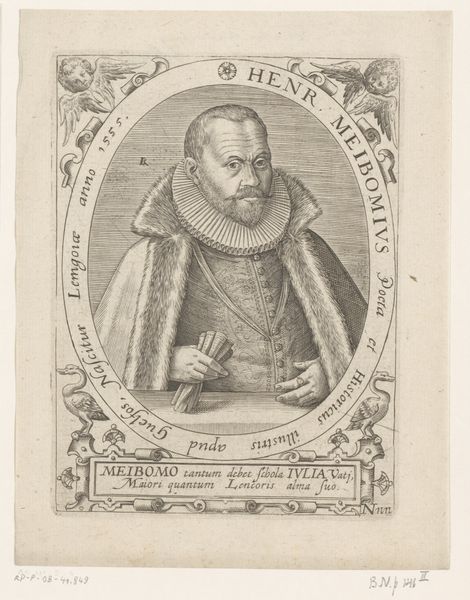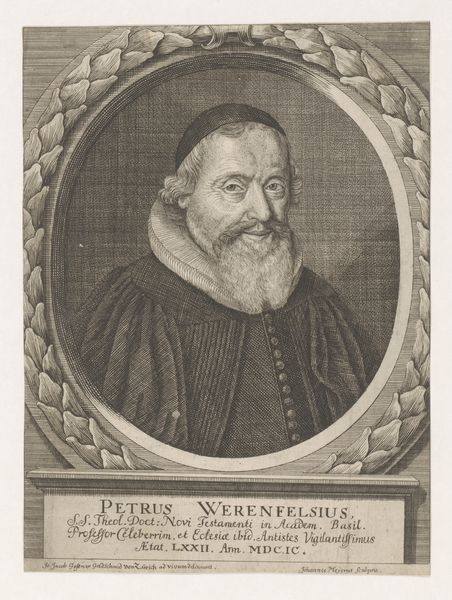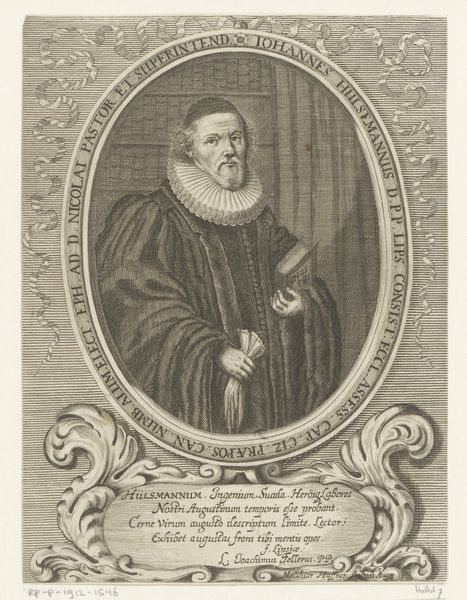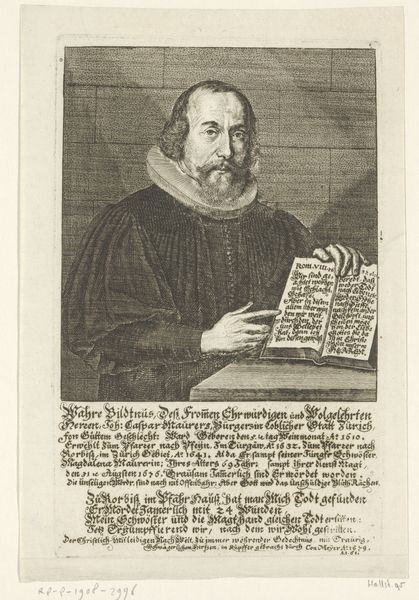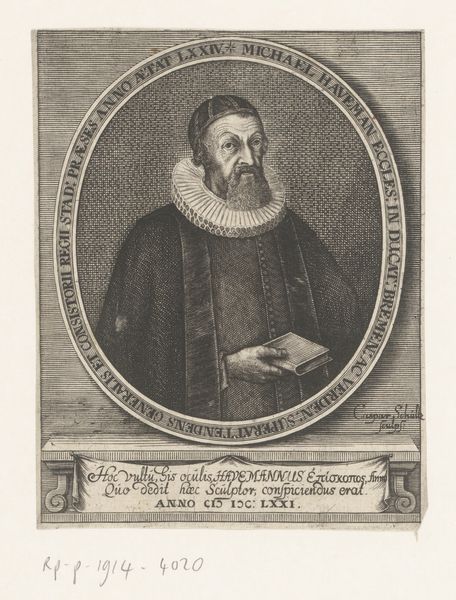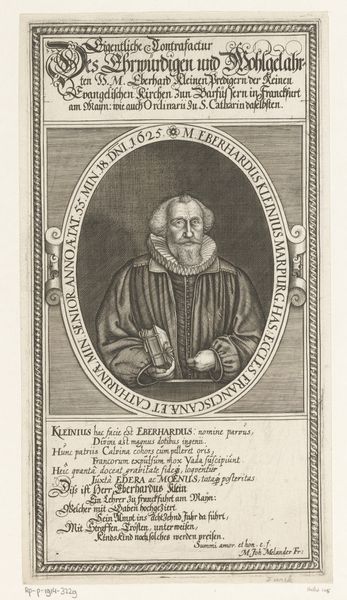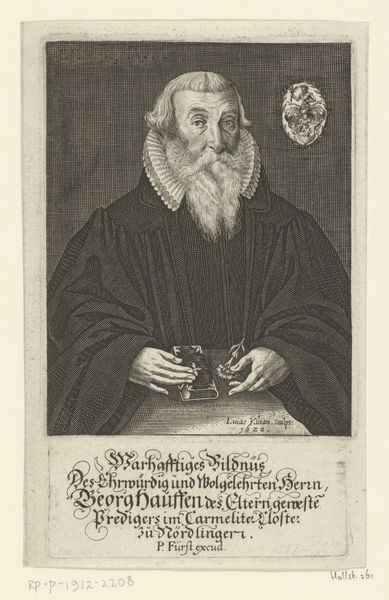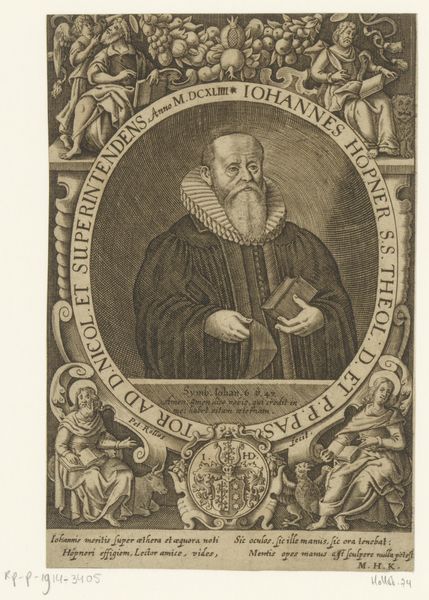
engraving
#
portrait
#
baroque
#
engraving
Dimensions: height 152 mm, width 88 mm
Copyright: Rijks Museum: Open Domain
Curator: Here at the Rijksmuseum, we have a Baroque engraving titled "Portret van Wolfgang Franz" by Johann Christoph Boecklin, made sometime between 1667 and 1709. Editor: It’s quite austere, isn’t it? The subject, encased in that laurel wreath, seems both dignified and… trapped, somehow. Curator: The laurel wreath does add to the sense of importance. Boecklin created this engraving likely as a commemoration of Wolfgang Franz's status; we see him presented as a theologian, as highlighted by the inscription. Editor: Yes, and the book he holds underscores that intellectual weight, it reinforces patriarchal structures of power in scholarly spaces. The very deliberate inclusion of Franz’s title and place of work seems almost propagandistic, designed to assert authority and influence. Curator: It’s important to remember the cultural context. These portrait engravings served as public representations, disseminating images and projecting social standing. Note how the artist strategically uses hatching to model light and shadow. These engravings, were relatively accessible, a key way in the 17th and 18th century for the middle classes to assert status, whether real or aspired to. Editor: I can see that. Still, look at his face—the eyes, in particular, suggest something more than mere authority. There’s a weariness, perhaps? A questioning beneath the surface. I wonder what societal pressures shaped Franz and compelled Boecklin's representational choices here? It would be interesting to contextualize his image within theories about performativity of gender in religious authorities. Curator: That’s an interesting reading. And indeed these kinds of engravings could act as an expression, and in some cases reinforcement, of the status quo. Thank you for bringing those thoughts to this observation, that's an avenue to consider in the wider history of portraiture. Editor: Thank you. Looking closely has illuminated so many things: technical skill, power dynamics, and the enduring mystery of a human life caught in ink.
Comments
No comments
Be the first to comment and join the conversation on the ultimate creative platform.
